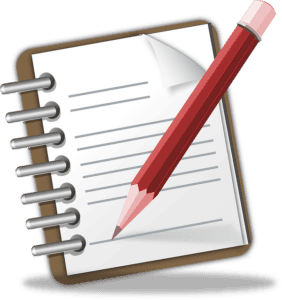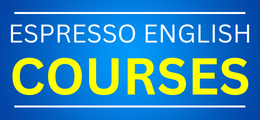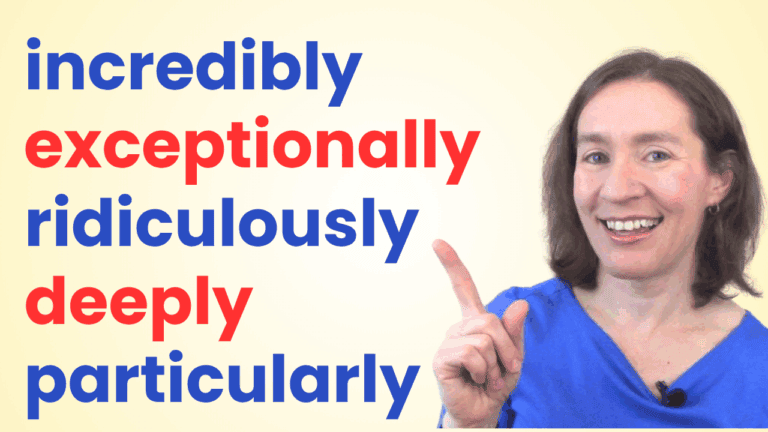What is a prepositional phrase?
Prepositional phrases are groups of words starting with a preposition, that describe nouns, verbs, and adjectives. We’ll see lots of examples in this lesson!
Prepositional phrases can function as adjectives, modifying nouns or pronouns by providing additional information about them. For example, in the sentence “The book on the shelf is mine,” the prepositional phrase “on the shelf” modifies the noun “book” by telling us where it is located.
They can also function as adverbs, modifying verbs, adjectives, or other adverbs by answering questions such as “where,” “when,” “how,” or “why.” For instance, in the sentence “He ran to catch his train,” the prepositional phrase “to catch his train” modifies the verb “ran” by telling us why he was running.
Prepositions can indicate direction, location, time, manner, and much more, and using prepositional phrases correctly can help you create better sentences! In this lesson, we’ll see lots of prepositional phrase examples, how they function within sentences, common uses, and common mistakes.

Common Prepositions Used in Prepositional Phrases
IN / ON / AT
These three prepositions are commonly used to indicate place or location. Here are some examples – the prepositional phrases are in bold:
- In: The book is in the bookcase.
- On: The pen is on the table.
- At: I’ll meet you at the park.
TO / FROM
These two prepositions are often used to show movement from one place to another. For example:
- To: We’re going to the mall. (destination)
- From: She came from Japan. (origin)
WITH / BY
“With” indicates association or accompaniment, and “by” shows how something was done. For example:
- With: I went to the beach with my friends.
- By: The cake was made by my sister.
ABOUT / FOR / THROUGH / UNDER / OVER
These prepositions are also frequently used. Here are some examples:
- About: He talked about his favorite movie.
- For: This gift is for you.
- Through: We walked through the forest.
- Under: The cat slept under the bed.
- Over: The plane flew over the mountains.
Check out this list of 600+ prepositional phrases!
Now let’s look at the different types of prepositional phrases.
Adjective Prepositional Phrases: Modifying Nouns
This type of prepositional phrase modifies nouns or pronouns in a sentence. It usually answers questions such as “what kind?” or “which one?” For example:
- I like cakes with buttercream frosting.
(prepositional phrase answers “what kind?”)
- The window in my bedroom needs to be repaired.
(prepositional phrase answers “which one?”)
In some cases, an adjective prepositional phrase may be essential to understanding a sentence’s meaning. For example, consider this sentence: “The man with the red hat is my uncle.” Here, without the prepositional phrase “with the red hat” describing the subject “man,” we wouldn’t know which man is being referred to.
Here are some more examples of prepositional phrases functioning as adjectives. The prepositional phrases are in bold, and the nouns they describe are underlined:
- The boy with blue eyes looks rather sad.
- I watched a show about South American history.
- She opened the gifts from her grandmother.
- This information is out of date.
- All the products on display are beautiful.
Adverb Prepositional Phrases: Modifying Verbs or Adjectives
Prepositional phrases act as adverbs when they modify verbs, adjectives, or other adverbs in a sentence. These typically answers questions such as “when?” “where?” “how?” and “why?”
Here are some examples of prepositional phrase modifying verbs:
- He drove to work at 7 am.
(when did he drive?) - I put the milk in the fridge.
(where did I put the milk?) - She sang with joy.
(how did she sing?) - We’re learning English for fun.
(why are we learning English?)
And here are some examples of prepositional phrase modifying adjectives:
- You’re very good at grammar.
(how are you good?) - This shirt is too tight in the sleeves.
(where is it tight?) - Honey is perfect for sweetening tea.
(why is it perfect?)
A prepositional phrase can even modify another adverb, for example: I like to get up early in the morning.
More Prepositional Phrase Examples
Prepositional phrases describing time:
- in the morning
- in the afternoon
- at night
- in July
- on Monday
- on Friday afternoon
- on the 15th of the month
- at 3:00
- in the winter
- in 1986
- during class
- before breakfast
- after work
- by Sunday
- until the 30th
- from 8 AM to 4 PM
- for three hours
- for fifteen years
- since January
- since 2001
Learn when to use IN, ON, and AT for different times and places
Prepositional phrases describing place:
- in the park
- in New York
- in Japan
- in prison
- in the kitchen
- in a taxi
- on Main Street
- on the couch
- on the roof
- on the ground
- on an island
- on a plane
- at the corner
- at home
- at a party
- at work
- at the doctor’s office
- at a concert
- under the bed
- behind the school
- near a hospital
- beside the airport
- between the two buildings
- inside the closet
- outside the country
Prepositional phrases describing manner / way of doing something:
- in a hurry
- by hand
- with care
- without hesitation
- with regret
- in tears
- by force
- on foot
- by car
- with anger
- by mistake
- without precedent
- with grace
- in a friendly way
- in a polite manner
Prepositional phrases describing reason / purpose:
- for fun
- for cooking
- for sale
- to meet new people
- to see you
- to find a job
- because of the delay
- due to the weather
Learn how to use TO and FOR correctly
How to use Prepositional Phrases Correctly in English
Prepositional phrases are essential components of a sentence that provide additional information about the subject, verb, or object. However, using them correctly can be difficult, especially for non-native English speakers. In this section, we will learn some tips on how to use prepositional phrases correctly in writing.
The first tip is to use the correct preposition. For example, consider these sentences with a similar prepositional phrase, but a different preposition:
- The book is on the table.
- The book is beside the table.
- The book is under the table.
The different prepositions make these three sentences mean completely different things! “On” the table means “on top of the table,” “beside” means “next to the table,” and “under” means lower than the table. This is why it’s important to learn common prepositions in English, what each one means, and how they are used.
Second, avoid using too many prepositional phrases, because it can make the sentence confusing. For example:
- The first part of the new movie about space travel in theaters now was rather boring.
This sentence is not very clear because it has three prepositional phrases in a row, and the subject (“part”) is very far separated from the verb (“was”). We should divide up the sentence so that it is easier to understand.
- There’s a new movie about space travel in theaters now. The first part of it was rather boring.
Also, be careful with where you put a prepositional phrase in a sentence. It should be as close as possible to the word it modifies. For example:
- John woke up to a beautiful sunrise in his bed.
This makes it sound like the sun was rising in his bed! - Laura gave cards to the students with decorations on them.
This makes it sound like the students were decorated! - John woke up to a beautiful sunrise.
(“in his bed” is not really necessary) - Laura gave the students cards with decorations on them.
Now it is clear that the cards are decorated
Finally, remember that some verbs and adjectives require specific prepositions after them in order to convey their intended meaning correctly. For example, “depend on” instead of “depend of,” or “married to” instead of “married with.” Check out these lessons for common verb + preposition combinations and adjective + preposition combinations.
Now you’ve learned how a prepositional phrase can function like an adjective or an adverb, you’ve seen lots of sentences using prepositional phrases, and you’ve learned about common mistakes to avoid with them. Try putting it into practice by writing your own sentences using some of the prepositional phrase examples from this lesson!










